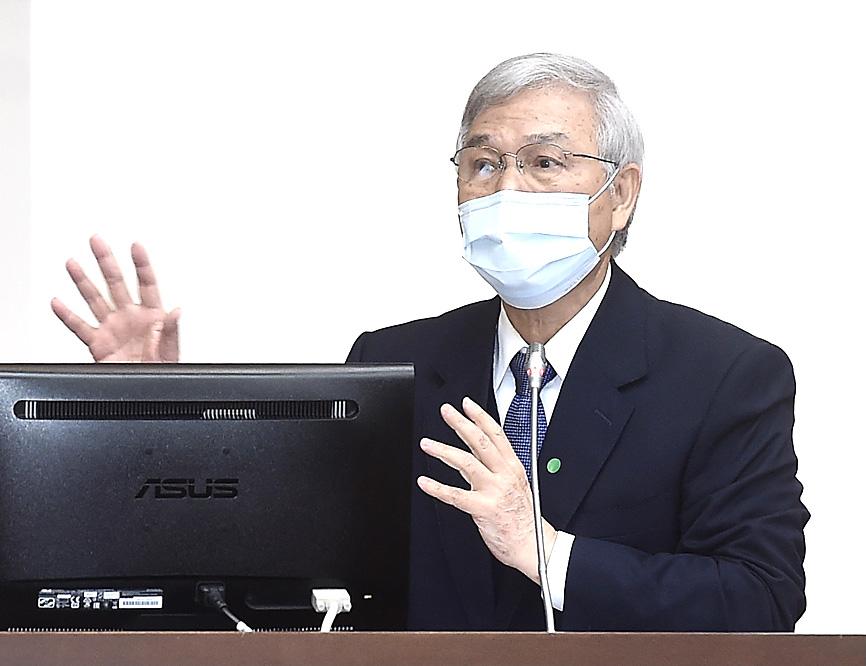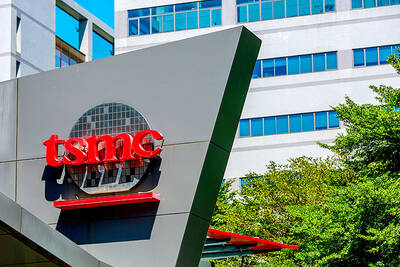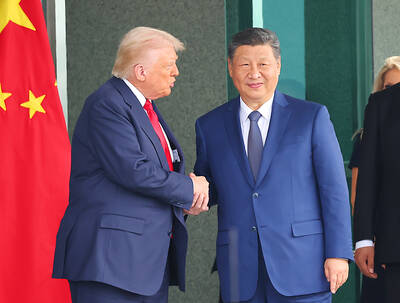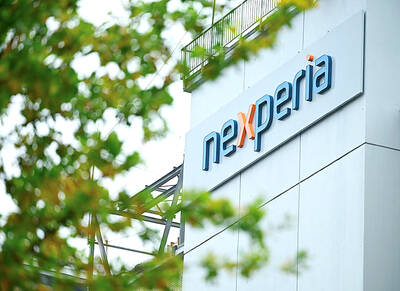A huge increase in foreign-exchange interventions could lead to the US labeling Taiwan a currency manipulator, central bank Governor Yang Chin-long (楊金龍) said yesterday, but he added that the designation is unlikely to have any immediate negative impact on the nation’s export-dependent economy.
“It is possible that Taiwan might be listed as a manipulator,” Yang told lawmakers in Taipei as he delivered a report.
However, Yang said that the US’ criteria for labeling another economy a currency manipulator are no longer suitable, as the global economy has changed over the past year.

Photo: Chien Jung-fong, Taipei Times
Taiwan’s high-trade surplus with the US, one of the US Department of the Treasury’s three criteria, is due to strong demand from US companies for semiconductors, rather than any perceived unfair advantage Taiwan has gained from its currency intervention, Yang said.
“If they want to reduce our trade surplus with them, then we could just stop selling them our chips,” he told lawmakers. “But they need them.”
The central bank stepped up its intervention in markets in the second half of last year as it tried to stop the New Taiwan dollar from strengthening on the back of the booming economy and trade.
Although being listed as a manipulator by the US has no immediate or specific consequences, Yang said the central bank would discuss its interventions and trade surplus with US Treasury officials.
The central bank’s net currency purchases surged more than 600 percent to US$39.1 billion last year, according to the report Yang delivered to lawmakers.
That equals 5.8 percent of Taiwan’s GDP, according to Bloomberg calculations, well above the US Treasury’s 2 percent threshold. In 2019, the central bank reported net purchases of US$5.5 billion.
Yang said that capital inflows had slowed since mid-January.
The central bank reported conducting what it calls currency “smoothing” operations in January, but not in the past month, according to earlier statements.
The US Treasury has three criteria for listing an economy as a currency manipulator: a current-account surplus equivalent to 2 percent of GDP, a bilateral trade surplus of at least US$20 billion and “persistent, one-sided” foreign-exchange interventions worth at least 2 percent of GDP.
Taiwan was added to the currency watch list in the latest US report in December last year, but was not listed a currency manipulator.
The US cited the “persistently large” current account surplus of 10.9 percent of GDP in the year to June and a US$25 billion trade surplus with the US as reasons for its addition to the watch list.
Being designated a currency manipulator requires the US to engage with the perceived offender to address the imbalance.
Yang said the central bank would revise upward its economic growth forecast on Thursday next week, when the bank’s board of directors is set to meet at its quarterly meeting to decide if it is necessary to adjust the bank’s monetary policy.
The bank on Dec. 17 last year predicted the economy to expand 3.68 percent this year, while the Directorate-General of Budget, Accounting and Statistics on Feb. 20 upgraded the GDP growth forecast for this year to 4.64 percent, up from the previous forecast of 3.83 percent.
The nation’s economy has grown steadily and the inflation outlook remains mild, but Taiwan still faces potential external risks, such as the effectiveness of COVID-19 vaccines, fluctuations in global financial markets and uncertainties in the international trade environment, Yang said.
Additional reporting by staff writer

RUN IT BACK: A succesful first project working with hyperscalers to design chips encouraged MediaTek to start a second project, aiming to hit stride in 2028 MediaTek Inc (聯發科), the world’s biggest smartphone chip supplier, yesterday said it is engaging a second hyperscaler to help design artificial intelligence (AI) accelerators used in data centers following a similar project expected to generate revenue streams soon. The first AI accelerator project is to bring in US$1 billion revenue next year and several billion US dollars more in 2027, MediaTek chief executive officer Rick Tsai (蔡力行) told a virtual investor conference yesterday. The second AI accelerator project is expected to contribute to revenue beginning in 2028, Tsai said. MediaTek yesterday raised its revenue forecast for the global AI accelerator used

Taiwan Semiconductor Manufacturing Co (TSMC, 台積電) has secured three construction permits for its plan to build a state-of-the-art A14 wafer fab in Taichung, and is likely to start construction soon, the Central Taiwan Science Park Bureau said yesterday. Speaking with CNA, Wang Chun-chieh (王俊傑), deputy director general of the science park bureau, said the world’s largest contract chipmaker has received three construction permits — one to build a fab to roll out sophisticated chips, another to build a central utility plant to provide water and electricity for the facility and the other to build three office buildings. With the three permits, TSMC

TEMPORARY TRUCE: China has made concessions to ease rare earth trade controls, among others, while Washington holds fire on a 100% tariff on all Chinese goods China is effectively suspending implementation of additional export controls on rare earth metals and terminating investigations targeting US companies in the semiconductor supply chain, the White House announced. The White House on Saturday issued a fact sheet outlining some details of the trade pact agreed to earlier in the week by US President Donald Trump and Chinese President Xi Jinping (習近平) that aimed to ease tensions between the world’s two largest economies. Under the deal, China is to issue general licenses valid for exports of rare earths, gallium, germanium, antimony and graphite “for the benefit of US end users and their suppliers

Dutch chipmaker Nexperia BV’s China unit yesterday said that it had established sufficient inventories of finished goods and works-in-progress, and that its supply chain remained secure and stable after its parent halted wafer supplies. The Dutch company suspended supplies of wafers to its Chinese assembly plant a week ago, calling it “a direct consequence of the local management’s recent failure to comply with the agreed contractual payment terms,” Reuters reported on Friday last week. Its China unit called Nexperia’s suspension “unilateral” and “extremely irresponsible,” adding that the Dutch parent’s claim about contractual payment was “misleading and highly deceptive,” according to a statement